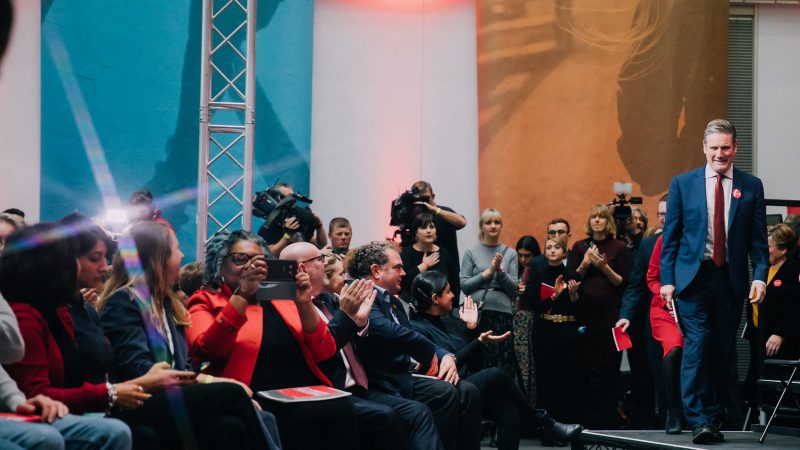
Voting closed at midday in Labour internal elections that will see 15 members freshly elected to the ruling national executive committee – with results that could strengthen the new leadership’s grip of the party machine.
The NEC is officially Labour’s governing body. It oversees the overall direction of the party, the application of its rulebook, the implementation of a policy-making process, and plays a role in the Clause V manifesto meeting.
The extent to which the NEC is all-powerful is up for debate, and Keir Starmer pledged during the leadership election earlier this year to limit its influence over key functions such as parliamentary candidate selections.
But it can take pivotal decisions greatly altering the party’s future, such as in 2016 when Jeremy Corbyn was automatically included on the leadership contest ballot paper and more recently the appointment of a new general secretary.
What we already know for certain is that the NEC will be expanded to 39 members, and that a number of current reps will depart – including left-wingers Jon Lansman, Huda Elmi and Rachel Garnham, who are not re-standing.
What we do not yet know are the results, set to be released in 24 hours. Those of the local party section will be shaped by the new voting system brought in under Starmer, which will prevent a ‘winner-takes-all’ outcome.
Who will be elected?
Labour members have cast ballots since October 19th to determine which nine candidates will represent local parties on the body, as well as to pick a disabled rep, youth rep, Welsh rep, two councillors and a treasurer.
The two incumbent local government representatives – Alice Perry and Nick Forbes – are highly likely to be re-elected, current treasurer Diana Holland’s victory is all but certain, and Mick Antoniw has a good chance of staying as Welsh rep.
The least predictable outcomes are those of the youth and new disabled rep posts, chosen via an electoral college that ensures trade unions have a big say in the final result. Young/disabled members count for 50% of the vote.
The Labour left’s Lara McNeill won the support of two big unions, Unite and GMB, and is therefore ahead in the youth race compared to rival Kira Lewis. They won around the same number of young member nominations.
Also with the backing of two big unions, this time UNISON and GMB, George Lindars-Hammond has the upper hand going into the contest – but opponent Ellen Morrison secured 206 local party nominations compared to his 64.
What do the elections mean for Starmer?
The NEC will be dealing with the implementation of the Equality and Human Rights Commission report recommendations, including the introduction of an independent process for antisemitism complaints.
The body will also likely have to consider the conclusions of the Forde Inquiry, which has been investigating the controversial leaked report and looking into party culture and practices that have been criticised by all sides as toxic.
The work of the inquiry, led by Martin Forde QC, has been successfully kept under wraps, although submissions of evidence have been leaked. Its final report is now expected to be delivered by the end of the year.
Starmer has reliably won votes on the NEC so far – but he will want to increase his majority, which is currently soft and narrow. Since being elected, the leader has had 18 solid supporters on the body, with two GMB reps acting as swing voters.
The balance of power on the NEC is made less certain by the three affiliated union general secretary races set to take place – UNISON’s contest is underway, while those of Unite and GMB are expected to be held next year.
These upcoming challenges and changes to the membership of the NEC make it all the more important for the new leadership that ‘Labour to Win’ – as opposed to ‘Grassroots Voice’ – candidates are successful.
The outcome depends both on how many Corbynite members have recently quit the party in protest at Starmer’s leadership decisions and on the extent to which new pro-Starmer members are willing to engage with niche internal elections.
All things considered, including the effect of using a single transferable vote (STV) system in the members’ section, the Labour leader will probably boost his NEC support by a couple of dependable votes – which will be very helpful to him.
Other Labour NEC election resources:
- Here’s the state of play as voting opens in Labour’s NEC elections (October 19th)
- What local party nominations tell us about Labour’s 2020 NEC elections (October 1st)
- Labour left wins most backing as nominations close in NEC elections (September 28th)
- Over 170 members are standing in Labour’s NEC elections. Who are they? (July 14th)
- How will Labour’s national executive committee elections work? (July 10th)
- Labour left groups agree single NEC slate of six CLP rep candidates – without Lansman (July 8th)
- Labour to Win unveils “pluralistic” set of NEC candidate recommendations (July 1st)




More from LabourList
‘No racist is going to make me feel I don’t belong’: Shabana Mahmood on resilience, faith and public service
Delivering in Government: your weekly round up of good news Labour stories
‘Labour should call time on the unfair system that is hurting pubs’